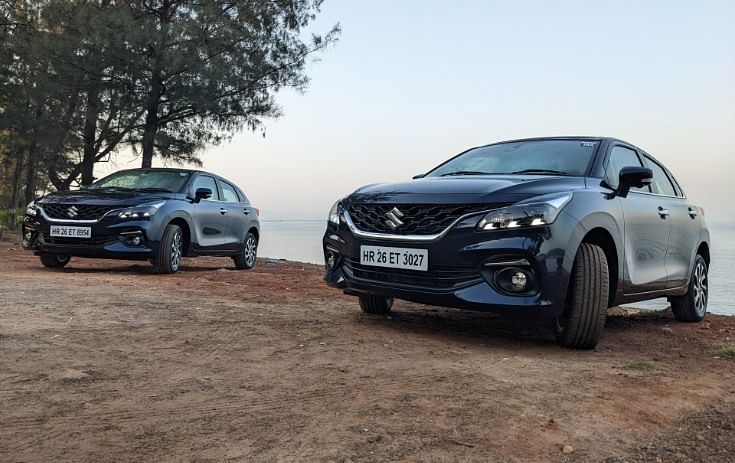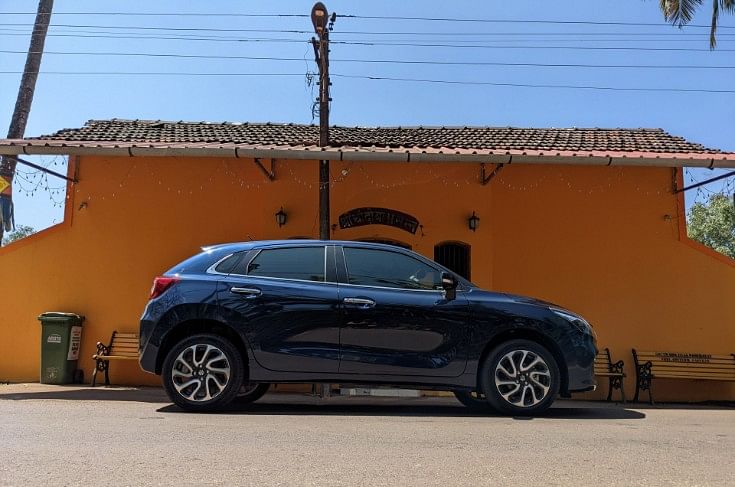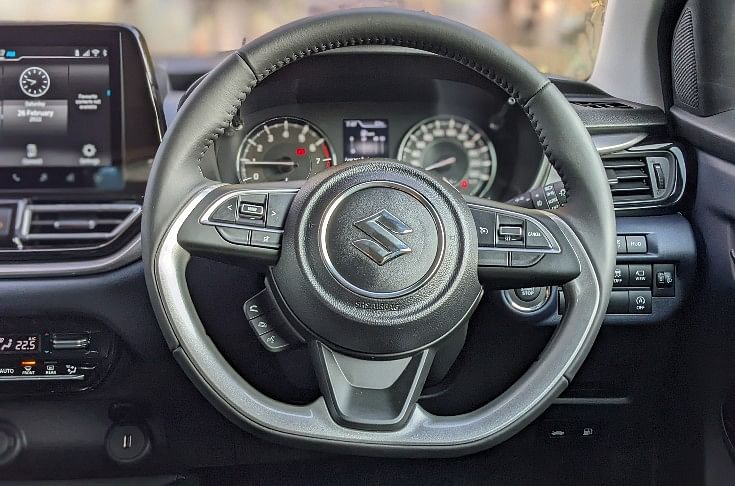The Baleno’s new credentials
The new model is aimed at strengthening the Baleno's position in the market flooded by compact SUVs in a similar price range.
Since its debut in October 2015, Maruti Baleno hatchback has remained largely unchanged with only a mid-life makeover in 2019, that coincided with the car’s upgrade to the BS 6 emission regulations.
However, the brand begins a new innings with the company introducing the second-generation model last month, at an overall investment of Rs 1,150 crore (including suppliers), infused into the project. For India’s largest carmaker, that number would sound insignificant, considering the Baleno’s sales potential, with the first generation itself clocking over one million units.
Maruti’s vision for the new model is clearly to strengthen the Baleno’s positioning in the market flooded by compact SUVs in the similar price band, and has customers cross shopping with compact sedans. Also, arch rival, the Hyundai i20, has become more advanced when it comes to styling, features or technology.
The company, therefore, has tried to achieve its goal by retaining the Baleno’s core credentials of space, practicality and design. It has also taken the package a notch higher by bringing in modern features, better driving dynamics and enhanced safety. While the outgoing model managed a 60 percent market share in India’s premium hatchback category, despite retailing solely from Maruti premium Nexa channel, the new model seems off to a good start with Maruti claiming 25,000 bookings at launch.
Evolutionary design

The new Baleno displays a more evolutionary design to the outgoing car, so much that it could well be mistaken for being a mere facelift. But on closer inspection, the sheet metal is completely new, and so are the bumpers, lights and wheels. There’s a broader grille, flatter bonnet, a sharper belt line running across the doors, and the LED tail lamps now extend into the boot.
Inside the car is a layered dashboard with a two-tone, black-and-blue colour scheme, and a brushed aluminium embellishment at its centre. The bigger highlights are the brand-new, 9-inch infotainment system, and also the flat-bottomed steering wheel and a retractable head-up display mounted on top of the instrument binnacle. The door pads have been revised too with new leatherette elbow pads. There’s also a new panel for the climate control system, and the seats now get stiffer cushioning at the base and a more supportive backrest with side contours. There’s a more relaxed backrest angle at the rear bench as well with the rear cabin also getting AC vents.
Weight specs

Maruti’s CTO CV Raman told this writer that the new Baleno is 55kg heavier, of which 25 percent is contributed by a new powertrain, and 25 percent by BIW, clearly evident in the way the doors feel. There’s a perceptible heft brought in by the side-impact beams added to complement the on-board six airbags, a first for any mainstream Suzuki offering in India. The ESC is also part of the package, along with a 360-degree camera that notably aids visibility in tight parking spots.
The remaining half of the additional weight is contributed equally by new on-board features, and the uprated suspension system, which includes a new torsion beam at the back, larger 14-inch disc brakes upfront and bigger 300mm drums at the rear. The braking setup earlier included 13-inch disc brakes and 280mm drums.
The new Baleno now gets a sole 90hp, 1.2-litre, Dual Jet petrol engine option with idle-start-stop function as standard to maximise fuel efficiency, which is certified at 22.35kpl for the five-speed manual transmission versions, and at 22.94kpl for the five-speed-AMT-equipped trims. The Magneti-Marelli-sourced AMT unit replaces the outgoing CVT offering better value to the customer by bringing down the price differential between manual and automatic to only Rs 50,000. According to Raman, “We want to democratise the two-pedal driving technology in India.”
The new K-series engine brings along two injectors for each of the four cylinders, as well as an exhaust gas recirculation (EGR) system to reduce carbon emissions and conform to the stricter CAFE-II norms slated for April 2022. There’s also an engine protection guard on the underside of the chassis, which continues to be the tried-and-tested Heartect platform that extensively utilises high-tensile strength steel. Raman reiterates that the new Baleno continues to comply with the crash test norms mandatory for the Indian market.
Behind the wheel

When one gets behind the wheels of the new Baleno, the subtle differences start getting pronounced. There is a noticeable difference in feedback from the steering wheel as well as how the new car rides on bad road patches. The steering feels well connected to the road up to speeds of 130kph and offers reasonable confidence to enjoy the Baleno’s nimble handling and sharp cornering manners. The overall sense of stability is augmented by the larger brakes which now have ample bite to stop the car without feeling nervous even at high triple-digit speeds.
However, straight-line stability under hard braking is still in this writer’s view, the Baleno’s Achilles heel, leaving the car swaying in all directions. Moreover, while it offers enough information like the speed, engine revolutions, as well as climate control settings, the head-up display is poorly integrated and doesn’t fall in the driver’s line of sight despite offering adjustments for setting its height.
The five-speed manual gearbox with a new hydraulic clutch is effortless to use and also prevents the engine from stalling if it’s running a higher gear at lower revolutions. The AMT unit, on the other hand, is also well calibrated and offers optimal levels of convenience for day-to-day city commuting. The gearbox, however, is keen to upshift to aid fuel efficiency but drivers can take manual control to undertake quick overtakes when required.
Connected car
Technology is one of the big talking points on the new Baleno, and the new 9-inch SmartPlay Pro+ infotainment system is slick in its operation with crisp display and legible fonts. There is wired Apple CarPlay as well as Android Auto connectivity suites bundled with this system, which, Maruti says will be updated to wireless functionality through an OTA update in the future. The system also supports connected-car features such as geo-fencing and remote tracking of the vehicle, by retrieving location data through the in-built Vodafone e-SIM card. The infotainment system also gets an Arkamys sound tuning setup, which, while has significantly improved the output from the six on-board speakers, leave a lot to be desired in terms of punch and loudness.
As compared to its predecessor, the new Baleno is notably improved and most of the updates are in the mechanicals that make it more enjoyable to drive and safer too. With almost consistent pricing, Maruti looks to retaining its No. 1 position in the premium hatchback space.
RELATED ARTICLES
Ashok Leyland's Mix of Strategy and Sustainability Ashok Leyland Aligns Sustainability Goals With Business Operations
Ashok Leyland is embedding sustainability deep into its operational strategy, leveraging green finance, electrification,...
New Players Reshape India’s Electric CV Ecosystem The Evolution of India’s e-CV Landscape
Unlike in cars and two-wheelers, the electrification of commercial vehicles is in very early stages due to uncertainty o...
Auto Giants Explore Hybrid Strategy as EVs Hit Speed Bumps
Slower-than-expected EV adoption, tight CAFE norms and ever-present efficiency demands are giving hybrids a second wind ...





 02 Apr 2022
02 Apr 2022
 11171 Views
11171 Views










 Shahkar Abidi
Shahkar Abidi



 Ketan Thakkar
Ketan Thakkar

